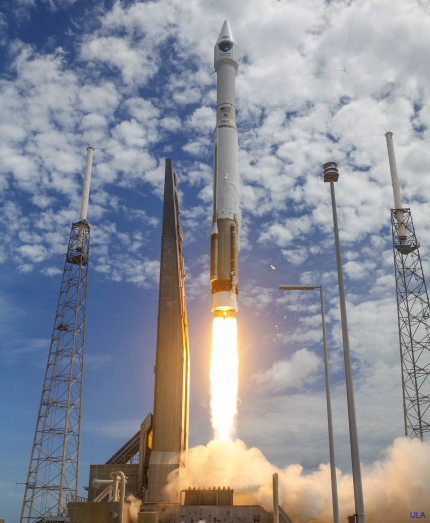Latest GPS IIF satellite makes it into orbit
While delays hold back development of the next-generation GPS III, the Air Force is keeping the current constellation up to date.

A ULA Atlas V rocket launches July 15 with the 10th GPS IIF satellite.
With ongoing delays holding off next-generation Global Positioning System III satellites, the Air Force is continuing to put GPS II spacecraft into orbit, with the launch July 15 of the 10th GPS IIF satellite from Cape Canaveral, Fla.
The Boeing-built satellite was launched aboard a United Launch Alliance Atlas V rocket and will provide improved geospatial signals for both military and civilian used, the Air Force said in a release. GPS IIF satellites have advanced atomic clocks for better accuracy, are designed to last longer than previous editions, and feature a new third civil signal, known as L5, that benefits commercial airlines through ionospheric correction and signal redundancy, and supports safety-of-life transportation applications.
The GPS IIF series, which began launches in 2010, are seen as an interim between earlier GPS satellites and GPS III, which are intended to provide more robust signals and longer lifespans at an affordable price. But the Air Force last year said it was slowing down the program’s development because of budget cuts. The service said it would purchase one GPS III satellite per year going forward, instead of its original plan to buy two satellites in 2015 and 2016 and three per year for each of the next three years.
In May, contractor Lockheed Martin moved the first of a projected 32 GPS III satellites into the testing phase, in anticipation of a planned launch in 2017.
This year marks the 20th anniversary of the GPS constellation, operated by the Air Force Space Command, achieving full operational capability. In some ways, the constellation, which provides ‘round-the-clock positioning and navigation information to civilian and military users, has exceeded its expectations. In fact, one reason Air Force leaders have been sanguine about the delays to GPS III is that GPS II satellites have exceeded their expected lifespans.
Still, the Air Force is looking forward to getting GPS III into orbit, since those satellites will provide some extra features, including a propulsion core that will allow the satellites to maneuver while in geostationary orbit and an eight-fold increase in anti-jamming capability. The growing ability of adversaries such as China or Russia to jam GPS signals is something military leaders and researchers are trying to address.




